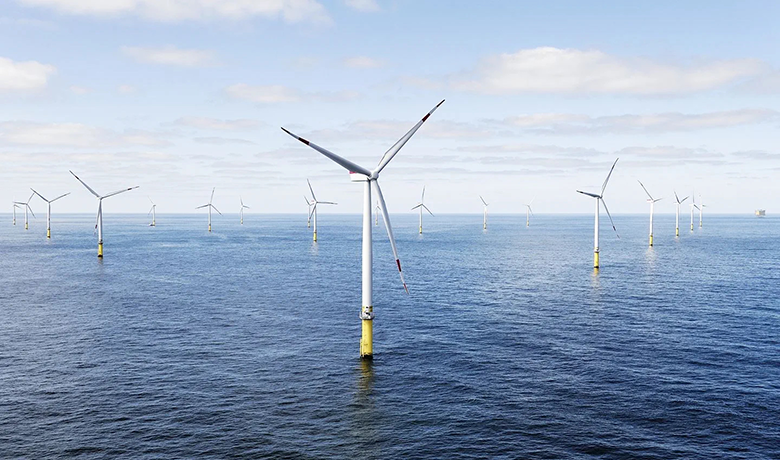(WASHINGTON) – The Bureau of Ocean Energy Management (BOEM) on Wednesday announced it has approved the plan for construction and operations of the Ocean Wind 1 project offshore New Jersey. Located about 13 nautical miles southeast of Atlantic City, the project will have an estimated capacity of 1,100 megawatts (MG) of clean energy – capable of powering over 380,000 homes – and is expected to create more than 3,000 good-paying jobs through development and a three-year construction cycle.
The announcement marks the Biden-Harris administration’s third approval of a commercial-scale, offshore wind energy project in the United States, joining the Vineyard Wind project offshore Massachusetts and the South Fork Wind project offshore Rhode Island and New York, both now under construction and being built by union labor. These projects represent significant progress toward the administration’s goals of developing 30 gigawatts of clean, renewable offshore wind energy by the year 2030, while protecting biodiversity and multiple uses of the ocean.
“Since Day One, the Biden-Harris administration has worked to jump-start the offshore wind industry across the country – and (the) approval for the Ocean Wind 1 project is another milestone in our efforts to create good-paying union jobs while combating climate change and powering our nation,” said Interior Department Secretary Deb Haaland. “By working closely with state and local leaders, tribes, ocean users, and other stakeholders, we are moving forward with responsible clean energy development that will benefit communities, while also mitigating potential impacts on the environment or marine life.”
The record of decision (ROD) documents the decision to approve Ocean Wind LLC’s plan to construct up to 98 wind turbines and up to three offshore substations within its lease area.
The decision also documents the extensive range of monitoring and mitigation measures that Ocean Wind will undertake to reduce the potential for impacts to protected species, such as marine mammals, sea turtles, and Atlantic sturgeon. These measures include vessel speed restrictions and clearance zones during construction.
Ocean Wind has also committed to three fisheries mitigation programs: a direct compensation program for reimbursement of lost revenues, a navigational safety fund for navigation equipment upgrades, and a reimbursement program for lost or damaged commercial fishing gear. BOEM worked with tribes, federal, state and local government agencies and reviewed comments provided by industry, ocean users and other key partners and stakeholders to develop these measures.
On June 24, 2022, BOEM published a draft environmental impact statement (EIS), initiating a 45-day public comment period that was later extended until Aug. 23, 2022. During this time, BOEM held three virtual public meetings to solicit additional feedback on the draft EIS from tribal nations, local community members, commercial fishing interests and other ocean users. BOEM received over 1,300 comments from federal, tribal, state and local government agencies, non-governmental organizations, and the general public during the comment period.
– Bureau of Ocean Energy Management

